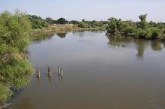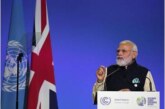Dr. Arvind Kumar, President, India Water Foundation

With the world still combating the most unprecedented global health crisis on score of sheer scale, India is reeling under the pressure of providing access to the fundamental human right to health to its population. Isn’t the strain on public healthcare systems and economy have been felt across the globe, exacerbating or atleast highlighting pre-existing socio-economic inequalities. Hasn’t Covid-19 demonstrated the indisputable cost of creating imbalances between humans and their natural environment?
The interdependent framework of human rights is exemplified in the nexus between health and biodiversity preservation, integral to survival of all living species. The right to health has been enshrined as a human right in the International Covenant on Economic, Social and Cultural Rights and key indicator of sustainable development with Goal 3 calling on all stakeholders to “ensure healthy lives and promote well-being for all at all ages.” The Convention on Biological Diversity explicitly recognizes the interrelated and direct link between health and biodiversity. The impact of environmental, climate and ecosystem changes on deteriorating standards of health is increasingly being recognized globally. This is because biodiversity underscores nature’s contribution to continue survival of people and meets the need for ecosystem goods and services, essential to human health. The field of biodiversity exercises a cross-cutting relationship with sectors that influence and impact health outcomes- whether directly or indirectly- like pharmacy, biochemistry, agriculture, microbiology or tourism.
The F20 Foundations, Campaign for Nature and SEE Foundation’s Nexus Report of 2020 urges for a three-fold framework to address the intertwined global climate, biodiversity, public health and sustainable development crisis. The framework stands on the shoulders of three pillars- to Protect, Restore and Connect. The duty to protect envisages a formal legal obligation to conserve biologically diverse, carbon dense ecosystems and complimenting it with management measures like identifying and acknowledging indigenous peoples’ ancestral territories. The duty to restore aims to recreate the ecological integrity and economic productivity of exploited ecosystems through reliance on locally and culturally appropriate measures and interventions. The State duty to connect is targeted towards linking natural terrestrial and aquatic ecosystems through protection and restoration measures that optimize synergies in the effort to adapt to climate change, prevent further biodiversity loss and construct sustainable, inclusive and equitable development. The Covid-19 pandemic has placed the imbalance in human relationships with nature and fragility of globalization, at the centre of the spotlight of global attention. The economic shocks are resonating throughout developed and developing nations as we strive to meet the public health emergency that we were completely unprepared for. As our leaders attempt to rebuild our economies, there is a pertinent need to recognize that the health crisis is accompanied by a biodiversity and climate change crisis that needs redressal. A way to achieve this is to develop a multi-sectoral policy that follows an integrative approach to biodiversity, health and economic recovery with intent to reconstruct a resilient society. Relaxations of environmental regulations under the mantle of Covid recovery cannot be allowed due to its myopic and ultimately damaging effect on socio-ecological survival by undermining commitments to climate change, ecological conservation, health protection and sustainable development targets.
#BiodiversityandHealthNexus #ForNature #COVID19 #ClimateChange #SustainableDevelopment #Pandemic #PublicHealth #GlobalHealthCrisis



